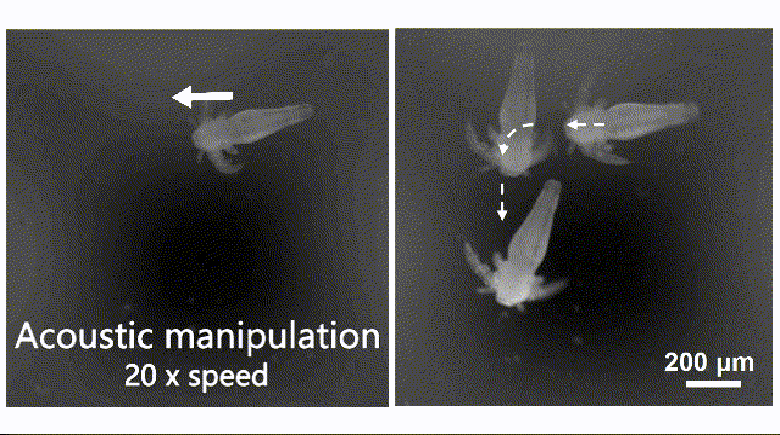
Flexible manipulation techniques for living cells and organisms are extremely useful tools for fundamental biomedical and life science research. Acoustic tweezers, which permit non-contact, label-free manipulation, are particularly suited to micromanipulation tasks as they provide a large acoustic radiation force and can be applied in various media. This work aims to realize programmable manipulation for living cells and micro-organisms in a common Petri dish by using holographic acoustic tweezers. To achieve this goal, we firstly design and fabricate a 3 MHz, 64-element (8 × 8), 2D planar ultrasound array with a small aperture (6mm). Then, using the array, the holographic acoustic tweezers are realized based on two key technologies: (1) synthesizing various complex acoustic fields by the holographic acoustic elements framework method. (2) precisely regulating these fields both in space and time. Finally, through the combination of microscopic imaging and holographic acoustic tweezers, the multidimensional translation, rotation, orientation, and levitation of living cells and organisms can be achieved in a common Petri dish.
In detail, the eggs and larvae of brine shrimp are chosen as manipulated targets and can be translated along a preset trajectory by controlling the central position of the vortex fields. By multiplexing counterclockwise vortices, clockwise vortices, and twin trap fields in a time sequence, the rotation direction of the shrimp eggs can be switched in real-time, while non-spherical larvae can be reoriented. Moreover, by using the reflection of the acoustic beam and streaming, the eggs and larvae can be lifted from the bottom of the Petri dish and further be manipulated in the vertical and horizontal directions. These results indicate that holographic acoustic tweezers based on 2D matrix arrays can realize complex and selective manipulation of living cells and organisms, thereby advancing research in the fields of cell assembly, tissue engineering, micro-robot driving, etc.
